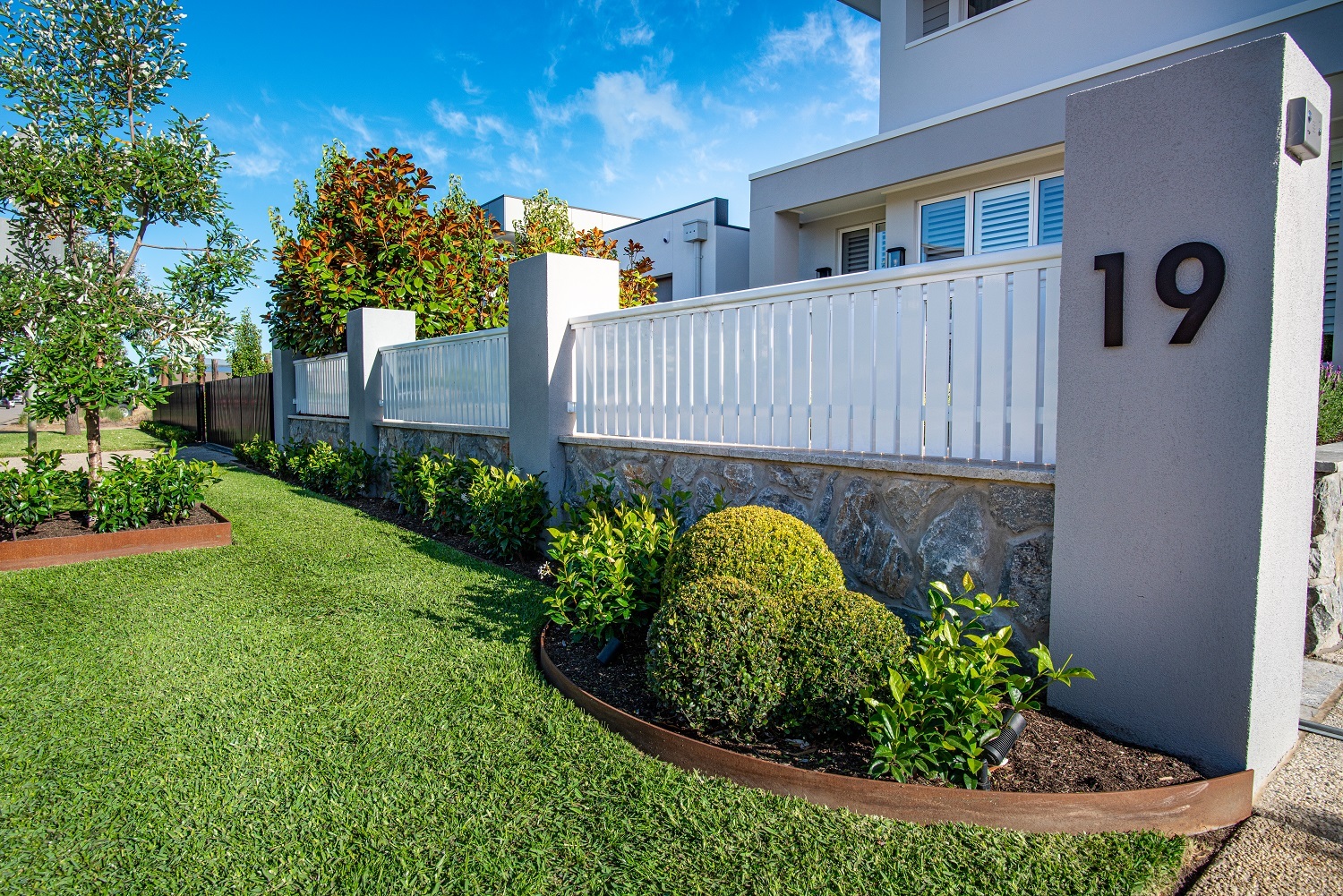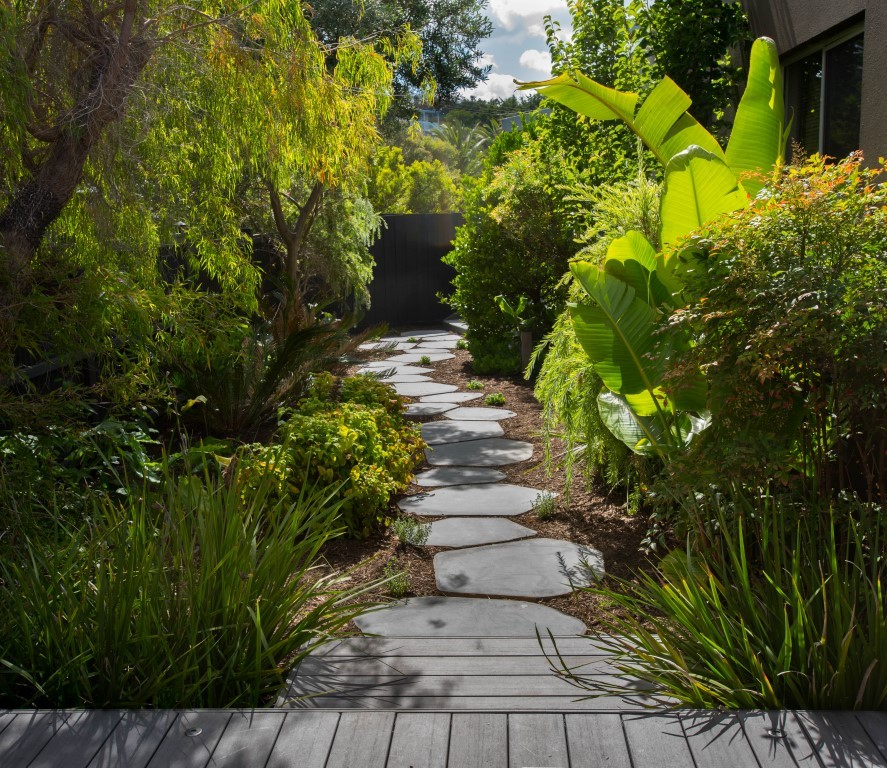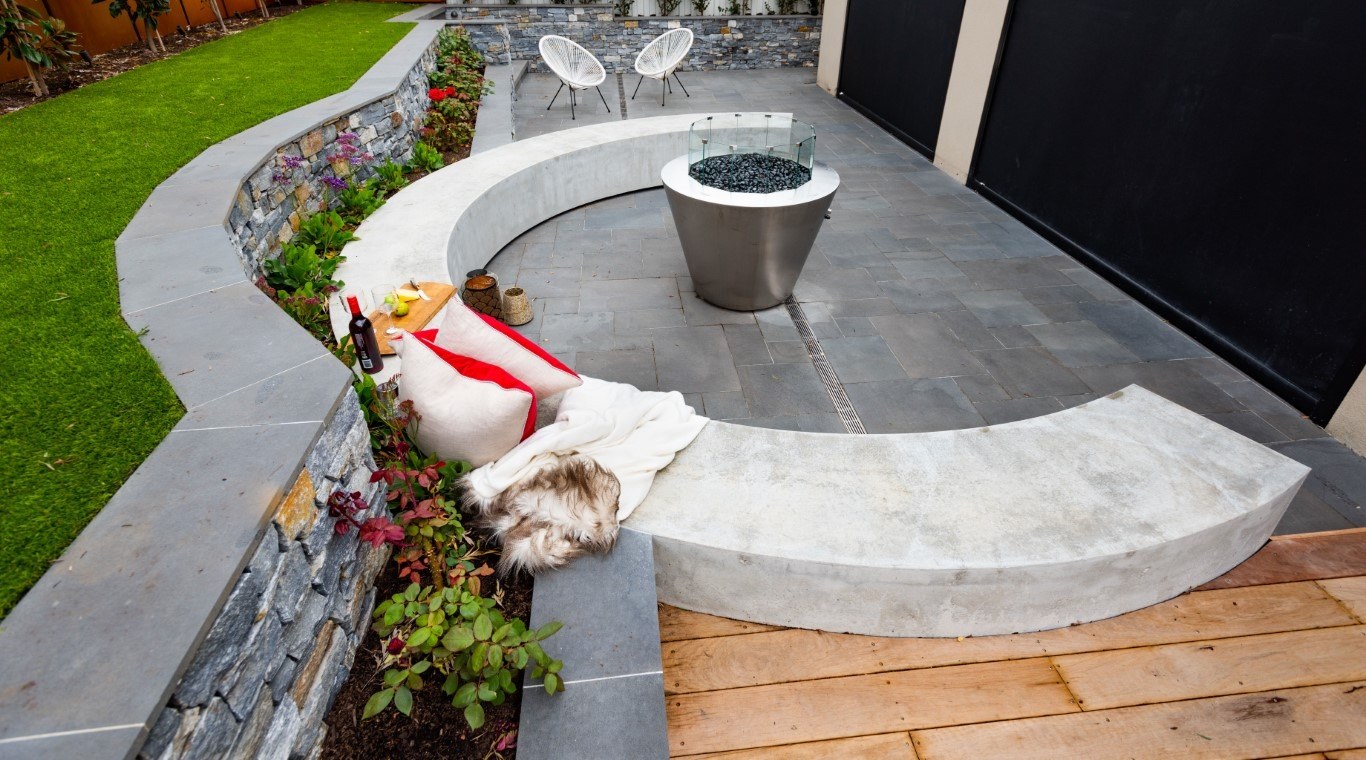- 22nd April, 2022
- By Andrea Uren
The 10 Most Common Landscaping Questions: Ideas and Solutions for Your Garden Project

No matter what size garden you have and no matter whether it’s a lush, meticulously landscaped oasis or a patch of grass that you’re just getting started on, chances are you’ve dealt with some of the problems we’re about to discuss.
These are basic questions about landscaping and basic garden care and maintenance that we get all the time in our line of work. Almost everyone who has had a yard of any kind has asked one or more of these questions at one time or another.
Knowing something about how to solve some of these common issues can make working in your garden a much less daunting task. You might even be inspired to tackle some jobs you’ve been putting off.
Read on for landscaping ideas and to hear our solutions to the most common landscaping questions.
1. Why do I have weeds in my garden and how can I prevent them?
You’ve probably experienced the way weeds can spring up seemingly from nowhere. Weeds spread when birds eat fruit and pass the seeds in their droppings. Maximising the number of plants in your garden will close gaps and create shade. This reduces the chances that stray weed seeds will germinate.
Mulching your garden is another way to suppress weeds. A thick layer of mulch hides seeds from the light so they aren’t able to germinate. Mulch also keeps seeds from coming into contact with the topsoil, preventing weeds from taking hold in the garden.
Keep in mind that if you renovate your garden, the soil will be ‘woken up,’ allowing sun and air to penetrate the soil and encourage seed germination.

2. Why does my grass die in winter and how can I get it to come back?
If your grass appears patchy, it may be water logged. A combination of compacted soil, lack of drainage, and too much rain in winter can cause water to sit in low areas, drowning the grass and causing patches to die.
If your grass appears dead in winter, it could also be dormant. Some species of grass are warm-season grasses, meaning that they thrive in warm weather and go dormant when temperatures drop. To ensure your grass stays green all year round, use a blend of warm season grass like Buffalo grass and cool season grass like Fescue.

3. Why aren’t my plants growing?
There are many reasons your plants may not be growing. The first is lack of water. Dry, brown leaves on your plants is a good sign that they are in need of more frequent watering.
Lack of nutrition can also cause plants to stop growing. When plants are newly planted, they need regular application of liquid fertiliser for the first 6-12 weeks. Established plants need more food in the growing seasons of spring and summer, with an extra application in summer, when plants can easily become stressed with heat.
If your plants aren’t putting on new growth, they might be planted in the wrong type of soil. Plant nurseries and hardware stores sell soil testing kits. These kits are a good way to check what nutrients your soil may need.
Other issues may also contribute to a lack of plant growth. If your plants are in high traffic areas, pets or children may be trampling them. Too many weeds can also stunt plant growth, as weeds will take nutrients away from your plants. You’ll also want to make sure your plants are getting enough light—but not too much.
4. Should I pave my garden area or build a deck?
While the decision you make will depend on your needs, the size of your garden, and how you intend to use it, we generally recommend paving. Paving your garden area is generally cheaper than decking, depending on the paver chosen, and does not require a building permit as a deck does. And choosing the right pavers adds functionality and beauty to your garden, extending your living space outside.

5. Should I seal my pavers?
We also recommend sealing your pavers, should you choose to pave your garden. Sealing makes pavers last longer, helps prevent staining so that your pavers maintain their appearance, reduces mould and mildew build-up and any accompanying discolouration, and helps prevent deterioration due to UV rays.
6. Should I use an oil or a stain on my deck?
Whether you want a matte, glossy, dark, or natural look, a necessary part of any deck maintenance is staining or oiling. Choosing the right product will ensure you achieve the look you want.
Both oils and stains have their own advantages. Essentially, what differentiates oils from stains is that a stain will improve the appearance of the deck by changing the timber colour, while an oil will enhance the natural colour if you wish to leave your wood as-is.
If your deck is Merbau, Blackbutt, silvertop ash, or jarrah, for example, you will most likely want to use an oil to enhance the natural beauty of the timber. You will likely need to sand and scrub the deck before the first oiling, but from then on, the only maintenance necessary is reapplying oil as needed. Alternatively, if your deck is treated pine, you may want to use a stain to change the colour and achieve a more rich, solid look. When it is time to re-stain, you may need to re-sand the wood first.
There are two types of decking oils available on the market: water based and oil based. Water-based decking oils last longer, as the product sits on top of the wood, while an oil-based product penetrates into the wood, giving it a very traditional look.
7. Why do I need a building permit for my deck?
If you want to build a deck, you’ll need a permit, which provides you with certification that your project complies with the relevant building legislation and codes and will be built correctly. A building permit is written approval that is provided by either a council or private building surveyor and can include approved plans, specifications, and associated documentation on how the work will be undertaken. As part of the building permit process, inspections will take place at key stages of the work and a final inspection or occupancy certificate issued upon completion of the project.
8. Why should I have irrigation installed in my garden?
Irrigation is useful in maintaining ideal soil moisture levels, which ensures plants don’t just survive, but thrive. Irrigation enables you to water plants less often, but more thoroughly. It’s also more efficient. When you water cooled soil in the evening or at night, less water evaporates than it would on hot soil during the day, and the plants can supply themselves with plenty of water before the next day’s heat.
Watering using irrigation also keep leaves dry, avoiding diseases. Wet leaves easily develop diseases such as black spot, particularly when kept wet overnight. Leaves that are made wet in the sun develop slight burn marks due to the magnifying effect of the water droplets.
Sufficient irrigation also ensures that water soaks into the soil, reaching the roots of the plants rather than only moistening the upper soil. Since irrigation waters plants gradually over a period of time, it allows water to fully penetrate the soil without wasteful run-off.
Finally, irrigation ensures water is evenly distributed around the plant to create a balanced, well-developed root system.
9. Why do I need a landscape design?
Another question we get is whether it’s necessary to have a design for your garden. The bottom line is that whether you’re updating a tired backyard, adding a backyard shower, or ripping up whole sections of your lawn for a full pergola installation, you need an idea, a design, and execution. You might have been dreaming about the day your new yard becomes the talk of the Mornington Peninsula, but having a plan and keeping your expectations realistic is key to avoiding financial headaches.
Hiring a landscape design expert can help you save money by setting expectations and developing a budget that works for you. They’ll also help you land on a project timeline that’s suitable. Remember, great haste makes great waste, so don’t rush into a DIY landscape project without a little expert help.
Unlike a kitchen or bathroom renovation, landscape design has difficult variables exclusive to Victoria. Unpredictable weather, seasonal changes, and local plants and wildlife all impact the type of garden you need.
With a professional on your side, you’ll be able to work with the environment on a timeline that works for you and with a budget under your control.
10. How do I make my garden low maintenance?
We have plenty of experience in helping people create a low-maintenance garden. One method is to use a contemporary style. A clean and minimal look requires far less maintenance than a cottage-style garden, which contains many different plant varieties that have varied needs.
You’ll also want to create pathways in your low-maintenance garden. These add interest while reducing the size of flower beds and the overall number of plants in your garden that must be cared for.
Climbing plants provide lots of lushness with relatively little maintenance and can be used to screen out unsightly fences and neighbours. Star leaf jasmine is a popular low maintenance climber with attractive foliage and fragrant flowers.
Grass is not a low-maintenance plant, and getting rid of your lawn entirely is one of the simplest ways to reduce time spent maintaining your yard. Decking, paving, gravel, and decorative pebbles are all great alternatives to grass that will save time spent mowing, weeding, treating, and aerating your lawn.
Finally, use multiples of the same plant as a mass planting to reduce maintenance. Choose just one or two plant varieties that will thrive in your garden and plant generously for an uncluttered—but still lush—look.
Putting Your Landscaping Ideas into Practice
We hope we’ve answered some of your questions, given you some landscaping ideas, and perhaps inspired you to turn your garden into an area for entertaining, relaxation, or even meditation.
Our many years of helping people create beautiful outdoor spaces has taught us that perhaps the most important aspect of landscape design is to have an idea and a plan. While you can create and execute these yourself, it helps to have an expert involved.